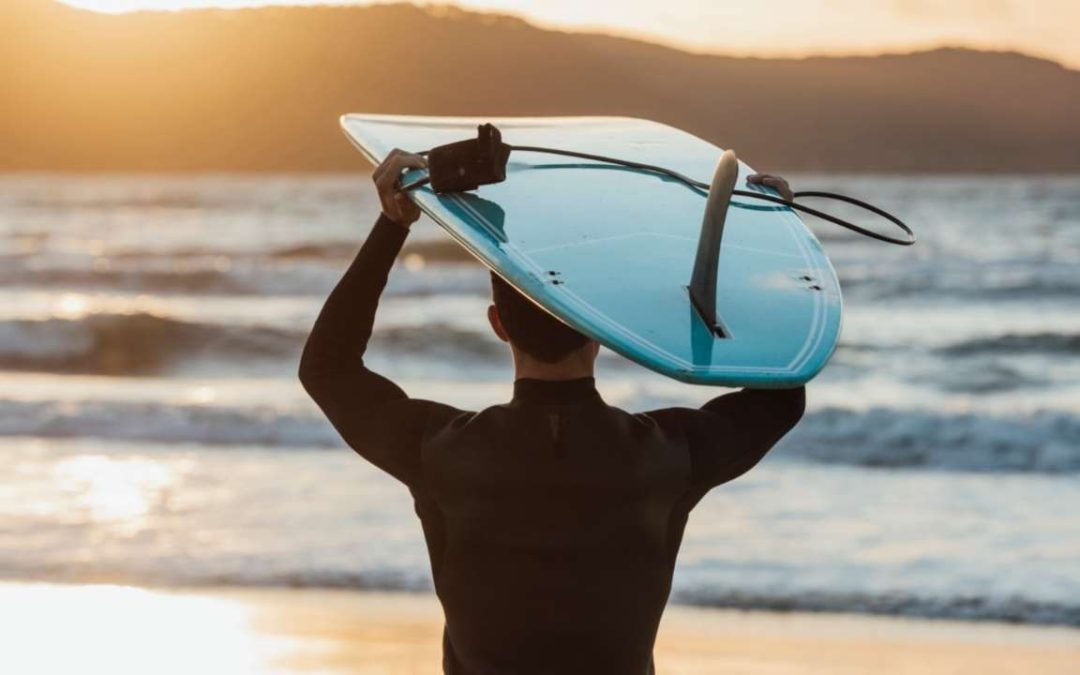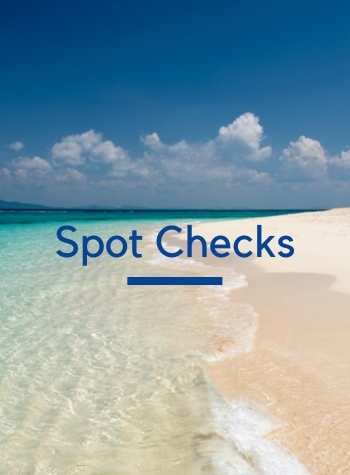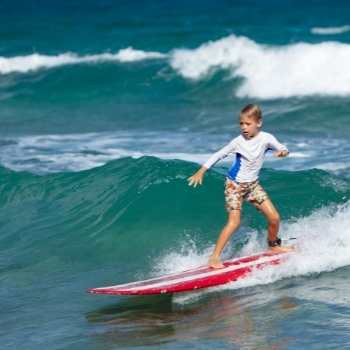Every day during the summer when I was growing up, my mom would take us to the beach. Weʻd normally get there around 11 and Iʻd get to play in the waves with my boogie board for hours. The waves were normally blown out and closed out around then but I didnʻt know any different. To me, it was all fun.
But all that changed when I was around 13 and I was allowed to ride my bike to the beach. I got there early one day and it was a whole different world. The water was smooth, waves were breaking with more shape, and people were riding them on surfboards
The same pattern emerges for almost every surf spot across the world, the morning is the best time for surfing, with the second best time in the evening. Winds are generally lighter in the morning and evening because of the temperature balance on both land and water. The shape of the waves, while mostly controlled by tides, does improve when the winds are light as well.
But itʻs not always that simple when youʻre dealing with mother nature. The best time to surf, really, is when the conditions are good. That requires swell size and direction, winds, tides, and a blessing from the gods. This can happen at any time of the day.
To really know the best time of day to surf, you have to know your local spot.
Observe Your Local Spot To Know When It Breaks Best
Every surf break in the world is unique. In fact, every wave at every surf break is unique.
Some spots break on north swells, others on south swells. Some spots can stay glassy all day or blow out before 9 in the morning.
To know when is the best time to surf, you have to observe your local spot in all conditions. Take mental notes and draw on that to know when the waves will be breaking.
I know that at the spot I grew up at, the best day of the year will happen just after a storm out of the northwest passes through, but it has to pass through in the afternoon. The tide needs to be rising at the exact same time to make this day of the year happen and like I said before, an act of god.
Your local spot may be perfect right at dawn, or it may take an hour or so for the morning sickness to wear off. Knowing how your spot works will allow you to have a clear sense of what the best time for surfing is.
The Four Reasons It Is Best To Surf In The Morning and Evening
Generally, the morning and the evening ARE the best times to go surfing. Thereʻs a reason why we get up early, because the waves are better. I donʻt know about you, but thatʻs all I need to get me out of bed.
- Avoid the crowds
There are many reasons why surfing at dawn and dusk is the best. One of the most obvious reasons is that the surf break will be less busy. This will then increase your chance of catching more waves and hopefully have a more enjoyable and peaceful time.
Surfers, however, are typically early risers so the beach can often always be busy. However, by getting out there at first light you may beat a few others from their slumber.
For years I would paddle out while it was still dark, sometimes as early as 4:45 in the morning, to get a few waves to myself before others paddled out. By six oʻclock when the other so called dawn patrollers would show up, Iʻve already had an hour of waves.
- Winds
As a general rule of thumb, the winds are normally lighter in the morning and evening. These light off-shore winds will allow the waves to be clean and hopefully produce a perfectly shaped wave.
The opposite of this is strong onshore winds that provide poor choppy waves which can make the waves unsurfable. This generally occurs as the temperature difference between the land and sea are further apart from each other, such as in the middle of the day.
- Start or end your day with a smile
If you are surfing at either end of the day there is something so special about being in the ocean for sunrise or sunset. Every surfer will admit that starting or ending your day surfing may be the best part of your whole day.
This peaceful and fun start or end of your day will be sure to give you a big smile no matter what.
- Health benefits
Surfing is good for your health in many ways. The physical aspects of surfing include your cardiovascular fitness (from paddling), shoulder and back strength and leg and core strength. Improve your paddling by reading this post before your next surf session.
Not only is the exercise good for you but the dose of vitamin D will always be beneficial. Sun exposure and vitamin D help you with serotonin, increased immunity, increased digestion and detoxification.
Surfing also provides a way for you to disconnect from your life and spend time in nature. Reconnecting with nature is extremely important in our modern-day life where we are often attached to screens and devices all day.
Surfing is also a great outlet for stress and tension. No matter what is going on in your day, time spent in the ocean is likely to solve your issues. This makes it a great way to start or end your day.
The Three Downsides To Surfing At Dawn Or Dusk
- Predators
Unfortunately, predators hunt at dawn and dusk. If you surf in an area that is common for shark encounters it may not be recommended to surf this early or late in the day.
The low lighting and dark water mean that a shark’s vision is obstructed. Without their good vision, a shark may be more likely to attack something by mistake.
Learn a few tips on how to avoid sharks while surfing by reading this post.
- Lack of sleep
As you become increasingly obsessed with surfing you may be sleeping less to make sure you get out in the water at first light. However, be careful to not burn yourself out. Surfing is a great sport however you don’t want to ruin it for yourself by not taking adequate care of yourself.
I had to stop my super early dawn patrols at some point because it was getting too hard to make it all the way through the day without wanting to take a nap. I still do it when the waves are gonna be good though.
- Surfing in the dark
If you happen to stay out past sunset or get in the water before the first light you may find yourself surfing in the dark. Is this safe?
No matter if you are familiar with the beach or not it will always look different when it’s dark.
Surfing on a full moon or close to a full moon is recommended for the additional light source. Also, a clear sky will add more light from the stars and it will be slightly easier to see.
Is It Better To Surf At Low Tide Or High Tide?
Now that you know what time of day is the best for surfing you may be wondering about the tides. As the tides are constantly shifting, they will be sure to affect your favorite time of day to surf. A good tool to help with all of this is a surf watch, not only can you tell the time with them, but you can time the tides as well.
Generally, the best tide to surf is at a rising tide. The best window during that rising tide is 2-3 hours after a low tide and up to 1/2 hour before a high tide is typically the best.
As we already mentioned though, nothing is that simple with mother nature. Some spots work better at low tide while others shut down. Others can thrive at high tide. Once again you have to get to know your local spot.
Tides are created by the gravitation pull of the moon during its different stages. When the moon is full the tides will rise and fall more drastically and this is when king tides are present.
Depending on where you are located the tides can drop a few feet or can be affected to up to 15 feet. Tides go in and out every 6 hours so there will be two high tides and two low tides every day.
A few rules to learn about tides and how they affect your local surf break:
- Lower tides mean that the water is shallower. This creates a steeper wave shape and the waves will more likely break faster.
- Higher tides mean that the waves are fuller and deeper because there is more water in the area. These mushy waves will allow you to have more time to get up and ride the wave. However, they can often be more difficult to catch.
- Whitewash waves, are typically gentler at low tide and will provide longer rides. This is ideal for beginner surfers. However, at high tide, the waves will generally be more powerful but shorter, breaking close to shore.



